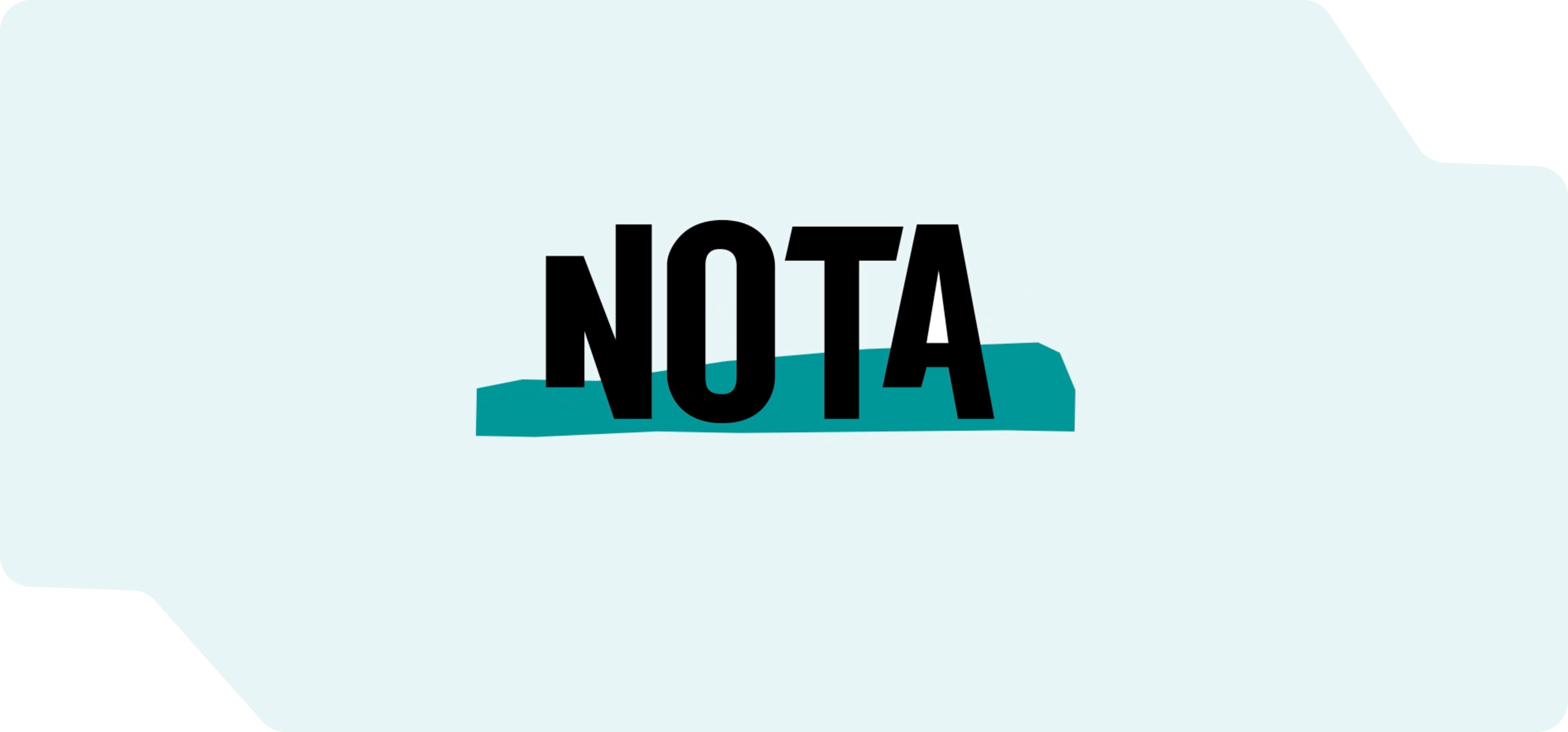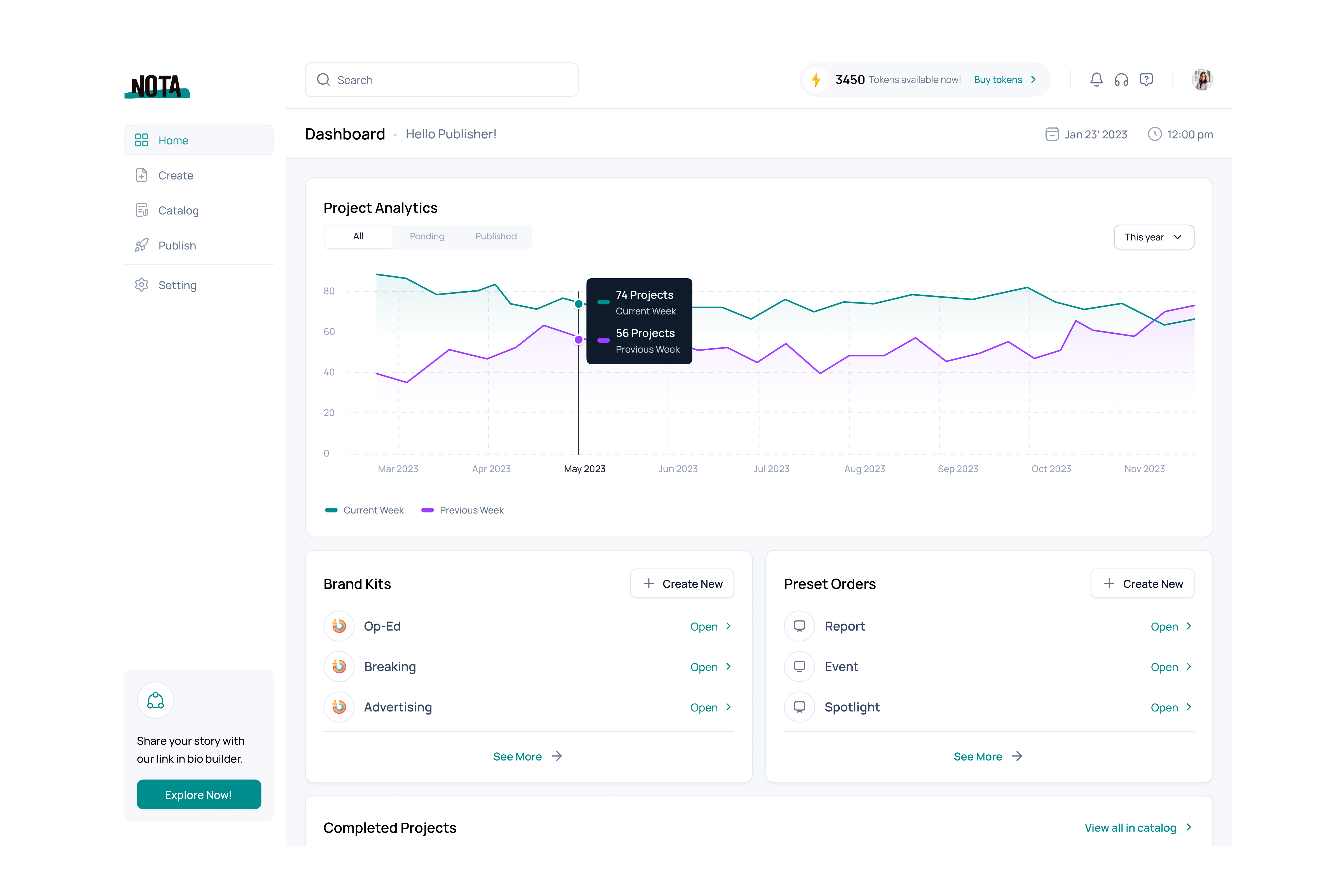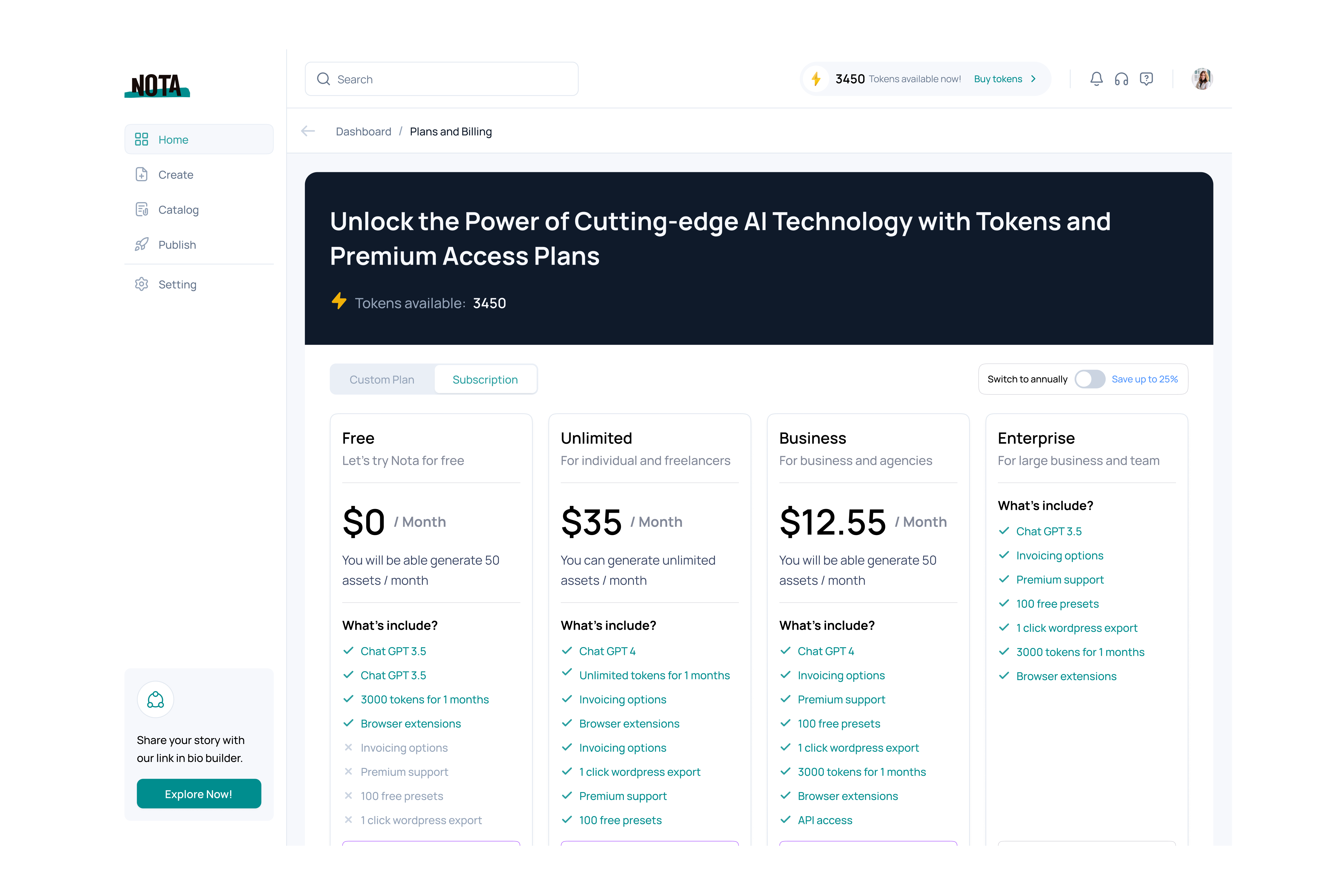ROLE
TOOLS
DETAILS
During the initial phase of Nota, I worked on designing AI-powered tools to help newsrooms and content teams speed up their content conversion processes. We started with a few core tools to streamline workflows and added additional capabilities over time, creating a platform that allowed teams to generate, adapt, and distribute content more efficiently.
Problem Statement
Existing content creation workflows for news outlets were time-intensive and fragmented. Key user personas experienced the following challenges:
- Editors and writers struggled to convert raw content (audio, video, or notes) into polished articles efficiently.
- Content managers needed to maintain consistency in style, tone, and formatting across multiple channels.
- Social and newsletter teams required rapid adaptation of content for diverse distribution formats.
- Corporate PR teams struggled to create and distribute content across multiple channels while maintaining brand consistency and efficiency.
Impact of these Problems
- Long production times delayed content publication.
- Inconsistent formatting and messaging reduced engagement.
- Teams were underutilizing AI capabilities, limiting productivity gains.
Opportunity
Designing Nota’s platform gave me the opportunity to create a user-centered experience that streamlined content workflows, integrated AI tools thoughtfully, and allowed teams to maintain high-quality, consistent output while reducing production time.
User Research to Shape Nota’s Product
I led research initiatives to understand the workflows, pain points, and priorities of newsrooms and journalists, using insights to directly inform the UX and UI design of the platform.
Interviewing Executives
Observing Editors and Writers
Analyzing Corporate PR Workflows
Evaluating Competitive Tools
Ethnographic Observations of Small-Scale Journalists
Leading Feature Prioritization Workshops
Observations I Gathered
Where Time Was Wasted
Flexible Tools
Leading with Ethical Transparency
Working with CEO Josh Brandau and the Nota AI development team, we determined the best user-centered content structures aligned with Nota’s mission of helping newsrooms and corporate PR teams create, convert, and distribute content efficiently while maintaining quality and consistency.
Business Strategy Alignment
Accurate and trustworthy – Maintain high-quality output, preserving brand voice and factual integrity.
Relevant to user needs – Avoid overwhelming users with unnecessary steps or tools.
Actionable guidance – Provide clear next steps for content conversion, adaptation, and distribution.
Distinctly Nota – Deliver content and interface language that reflects the platform’s AI-assisted productivity focus.
Content Structure Approaches
Feature/Benefit – Highlight each AI tool or workflow enhancement and explain its direct value.
Workflow Comparison – Enable users to understand trade-offs between manual and AI-assisted processes.
Implementation
Hierarchical organization – Structure modules and dashboards with clear sections and sub-sections for intuitive navigation.
Detailed outlines – Specify information architecture for each tool and workflow stage to guide development and ensure consistency.
Wireframes & Prototypes
I started by creating low-fidelity wireframes on paper, mapping out the core workflows for content conversion, AI tool integration, and distribution. I then moved these sketches into Miro, collaborating closely with the CEO and CTO to refine flows, clarify hierarchy, and ensure that each tool addressed real newsroom pain points within the capabilities of the team’s AI tools. This collaborative process allowed us to validate assumptions and align on a flexible structure before building interactive prototypes.
Once wireframes were validated, I built low-fidelity Figma prototypes that brought the workflows to life. The engineering team rapidly added new AI tools and capabilities, so I iterated on the prototypes repeatedly, testing interactions, navigation, and layout to ensure each feature fit seamlessly into the overall workflow. This iterative approach helped us integrate complex AI functionality while keeping the platform intuitive, efficient, and actionable for both large and small content teams.
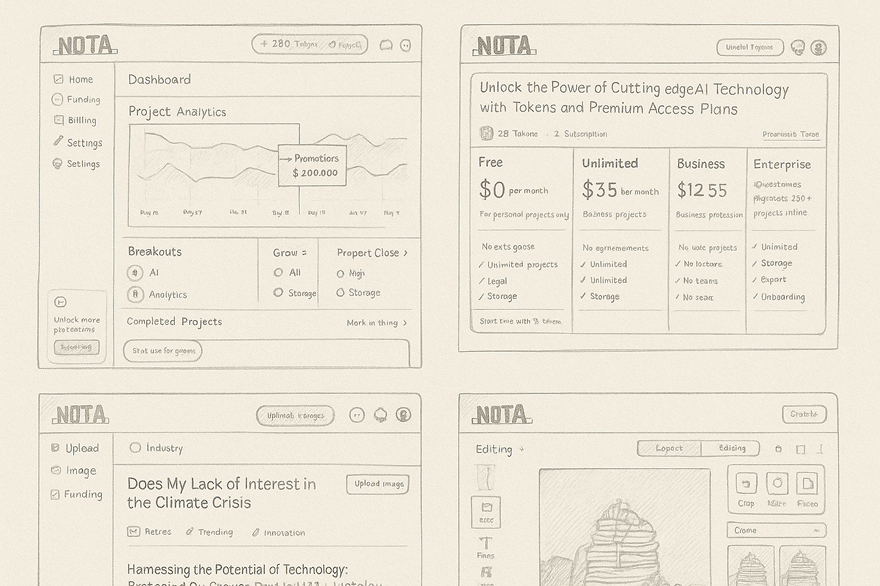
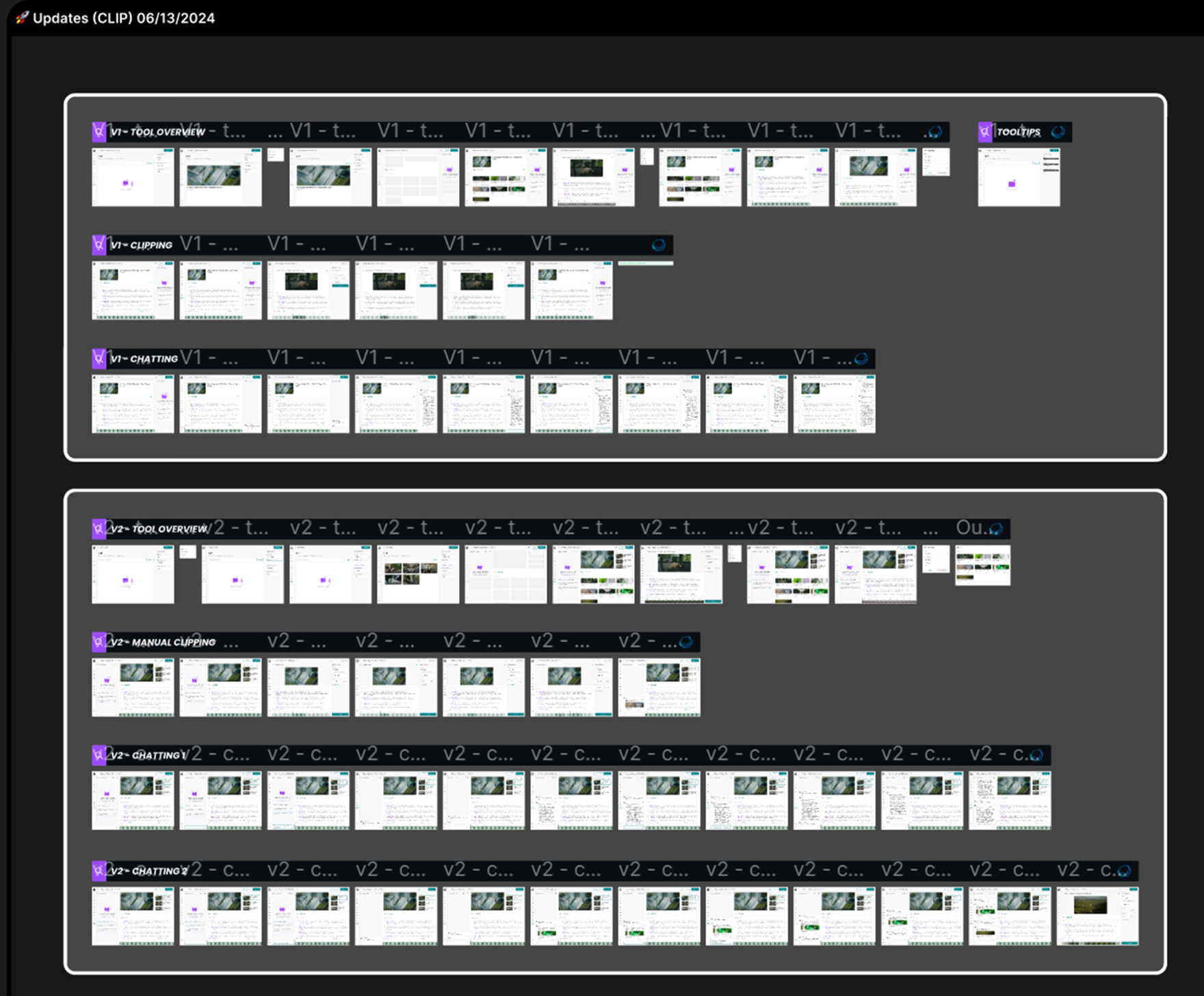
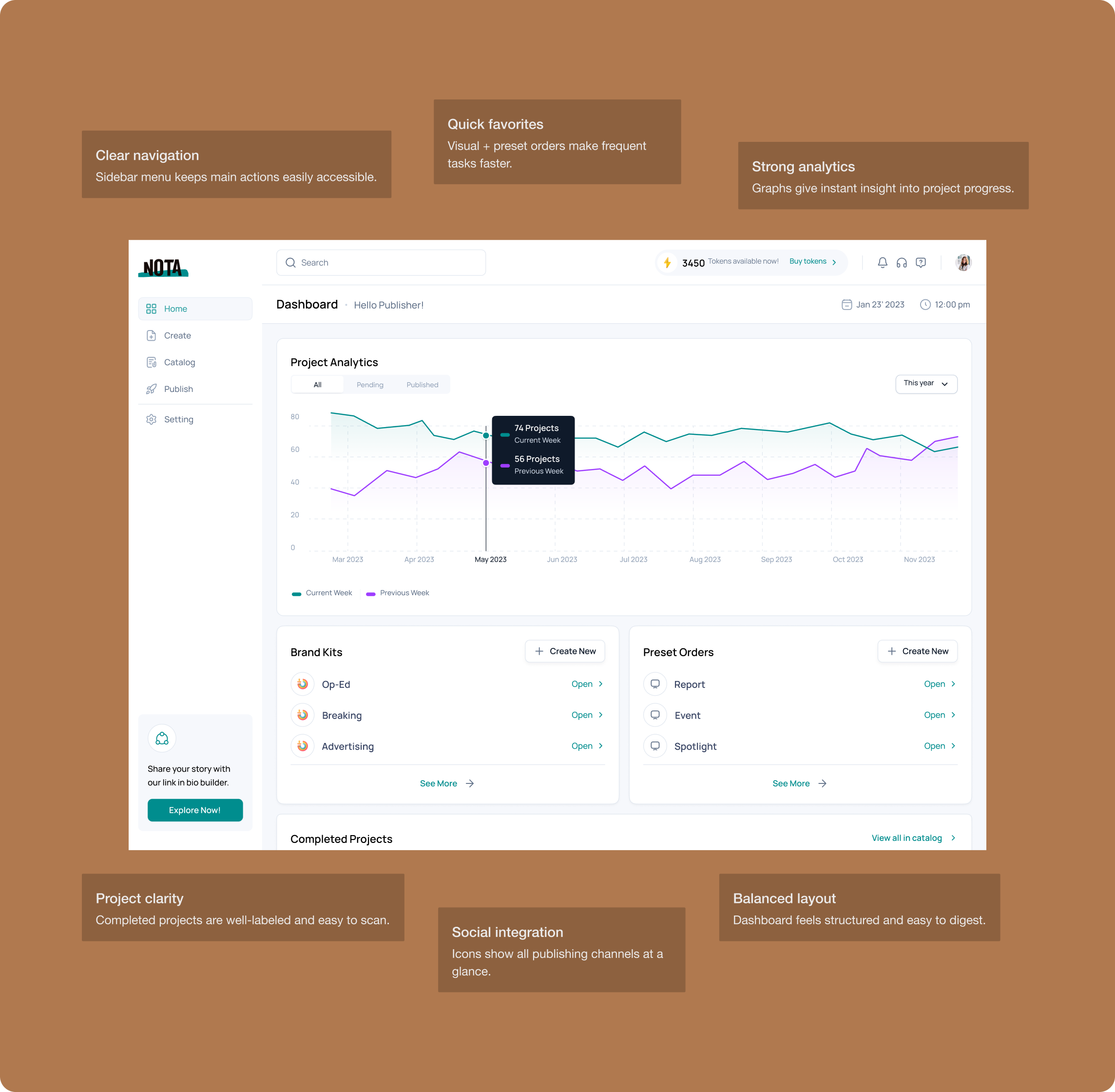
Design and Development
After validating the low-fidelity prototypes, I built high-fidelity designs in Figma, defining every element of Nota’s AI tools, including interface components, interaction states, and responsive layouts. I created detailed design notes and documentation specifying how each AI feature should behave, from content conversion suggestions to adaptive workflow tools. These specifications ensured the engineering team could implement the features accurately while preserving usability and consistency. Once finalized, I handed off the Figma files and documentation, providing a clear reference that guided development and supported the seamless integration of Nota’s AI capabilities into the platform.
The Nota product design project allowed me to shape a platform that helps content teams work faster, smarter, and more confidently using AI tools. By grounding my design decisions in user research, I focused on creating intuitive workflows, actionable features, and transparent AI interactions that addressed the real needs of content creators.
Key Outcomes
Through a user-centered approach, I designed interfaces and AI-driven workflows that streamlined content conversion, improved efficiency, and reduced cognitive load for users. Iterative testing and feedback ensured each tool delivered immediate value while remaining flexible enough to incorporate new AI capabilities over time.
Impact on Users
My design work helped users gain confidence in leveraging AI, making complex tasks like content transformation, adaptation, and organization more manageable and accessible. By prioritizing clarity, actionability, and transparency, I enabled teams to adopt AI tools without feeling overwhelmed or uncertain.
Impact on the Organization
The streamlined and elegant design and expanded AI tools helped Nota secure over $3 million in funding from Microsoft and other investors. Today, the Nota SAAS platform supports media outlets covering the majority of the United States and reaches millions of news consumers daily, demonstrating both commercial and societal impact.
Strategic Value
Beyond improving day-to-day productivity, this project demonstrates how thoughtful design of AI tools can enhance trust, usability, and user empowerment. By aligning design principles with the evolving capabilities of Nota’s AI, I set the foundation for a platform that scales efficiently while remaining user-centered and ethical.
